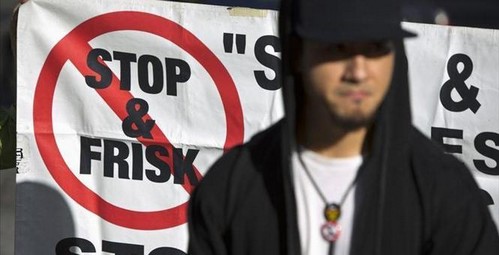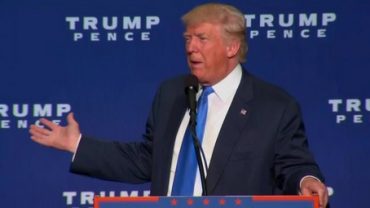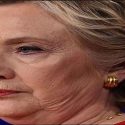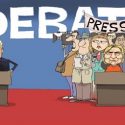Stop and Frisk: The Inner City’s Best Friend
As a famous caterer once reminded me, you don’t get a second chance to make a first impression. It does no good to call the hostess the next morning and say, “Yes, Madame, there was too much salt in the bisque. Next time I’ll use less.” There is no next time. The goose is already cooked.
So it’s no help to Donald Trump, who put too much salt and not enough meat in his verbal stew when discussing stop and frisk at Monday night’s debate, to explain now the point he appeared to grasp but did not quite make: Stop and frisk is a poor person’s best friend. A law-abiding citizen living in the inner city or a housing project, likely knows this, whether it’s safe to say so or not. Stop and frisk should be the rallying cry of all who care about good citizens who live in low-income neighborhoods. New Yorker Stacey Calhoun, who begged for the reinstatement of stop and frisk last year, however, wasn’t afraid to defend the practice. A grieving Mr. Calhoun said he believed that stop and frisk might have saved the life of his nephew. The young man was 23, a promising chef, who died after he was hit in the back by a stray bullet, outside the Queensbridge Houses, a crime-ridden public housing project on Long Island.
Stop and frisk was credited with a reduction in crime under mayors Rudy Giuliani and Michael Bloomberg. Former federal District Court Judge Shira Scheindlin ruled the practice unconstitutional, while Bloomberg was still mayor. The ruling was blocked by a higher judge who demanded that Scheindlin be removed from the case because of bias. It was probably on the basis of this case that Lester Holt insisted that stop and frisk is unconstitutional. Without naming her, Trump referred to her Monday night as a “very against-police judge;” Scheindlin shot back, calling Trump’s s characterization of her as “very cheap.”
Ultimately, the court case didn’t matter. Mayor Bill de Blasio made it very clear that he didn’t want police to stop and frisk people they judged to be on the verge of committing a crime. The crime rate has ticked up.
The website of the Legal Information Institute at Cornell University, a nonprofit aimed at promoting public understanding of the law, stop and frisk defines it as a “a brief, non-intrusive, police stop of a suspect.” LII continues: “The Fourth Amendment requires that the police have a reasonable suspicion that a crime has been, is being, or is about to be committed before stopping a suspect. If the police reasonably suspect the person is armed and dangerous, they may conduct a frisk, a quick pat-down of the person’s outer clothing.” The idea is not random stops, but stops aimed at preventing imminent crime rather than waiting for it to happen. Certainly, this system could be abused, and it is important that it be monitored, but the benefits of crime prevention ought to be obvious.

Tougher laws may subject some people to unnecessary stops, but the only people who strenuously object to stop and frisk are thugs, people contemplating a crime, and liberals who oppose the practice under the misguided notion that to do so is on the side of the underdog. The real underdog is the law-abiding citizen of the ghetto who will be only too glad of a little more law and order.
The argument against stop and frisk most commonly advanced is that it amounts to racial profiling. Actually, it amounts to crime-profiling. Opponents of stop and frisk have claimed that blacks are more likely to be stopped than whites. This is true, and an unfortunate but inevitable outgrowth of the reality that a disproportionate number of blacks commit crimes. In a Wall Street Journal column several years ago, Heather Mac Donald cites figures in a Wall Street Journal column that blacks constituted 78% of shooting suspects and 74% of all shooting victims in New York in 2012, despite African Americans making up less than 23% of the population. It is also the case that crime-riddled neighborhoods in need of more police patrols tend to be minority neighborhoods.
It can be inferred that when crimes that might have been prevented happen, the majority of the innocent victims are poor inner city residents. Mac Donald writes, “The biggest beneficiaries of a dramatically safer New York have been law-abiding residents of formerly crime-plagued areas. Minorities make up nearly 80% of the drop in homicide victims since the early 1990s. New York policing has transformed inner-city neighborhoods and allowed their hardworking members a once-unthinkable freedom from fear.”
I once listened to a woman who lived in a Washington, D.C., housing project, where she was trying to raise a daughter. She heard bursts of gun fire at night and it was obvious that she lived in fear. If stop and frisk can make this woman’s life less frightening, then we should be all in favor of it. Of course, we shouldn’t violate the constitutional rights of anybody, even the gangbangers, but our primary loyalty should be with the law-abiding citizen, and poor law abiding citizens have much to gain-including day-to-day safety-from stop and frisk.
Unlike caterers, politicians sometimes get a second chance to make a first impression. Let’s hope that if Trump gets a second chance on stop and frisk, he’ll turn it into a clarion call for being on the side of the law-abiding poor. We need to be on the side of the people who need law and order but are often deprived of it by liberal policies.






